11 Beautiful Orange Perennials for Low-Light Garden Spaces
If you are looking to add vibrant orange hues to your shaded garden, there are plenty of stunning perennials that thrive in low-light conditions. These plants not only brighten up darker corners but also bring unique textures and seasonal interest. Whether you’re planting under trees or in a shaded border, these orange beauties offer the perfect solution for a colorful, low-maintenance garden.
This post may contain affiliate links, which helps keep this content free. Please read our disclosure for more info.
Astilbe (Astilbe spp.)
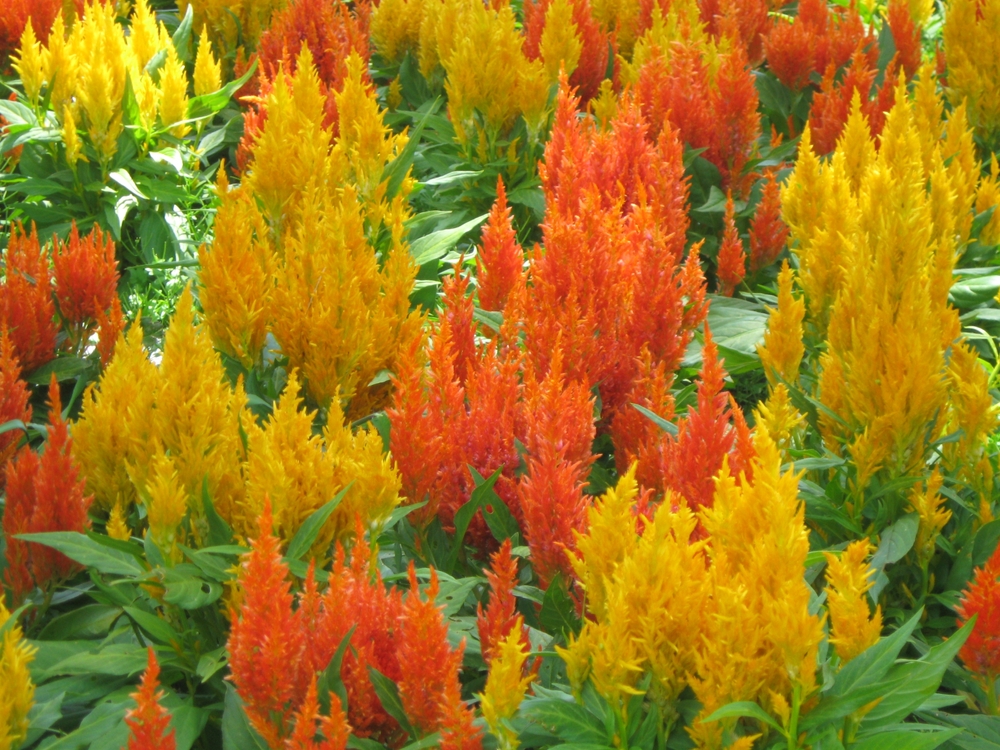
Astilbe is a fantastic choice for shaded gardens, offering vibrant orange flowers that bloom in late spring and early summer. The plant’s fern-like foliage adds texture throughout the growing season, even after the blooms have faded. Astilbes prefer moist, well-drained soil, which makes them perfect for planting near water features or in areas that tend to stay damp. They thrive in partial to full shade, making them an excellent option for woodland gardens or shaded borders.
These perennials are relatively low-maintenance, requiring little care beyond regular watering to maintain moisture. The orange flowers of Astilbe stand out against its lush green foliage, adding a pop of color to shaded spots. Whether planted in groups or as a border along paths, Astilbe provides consistent interest and works well alongside other shade-loving plants.
Tiger Lily (Lilium lancifolium)
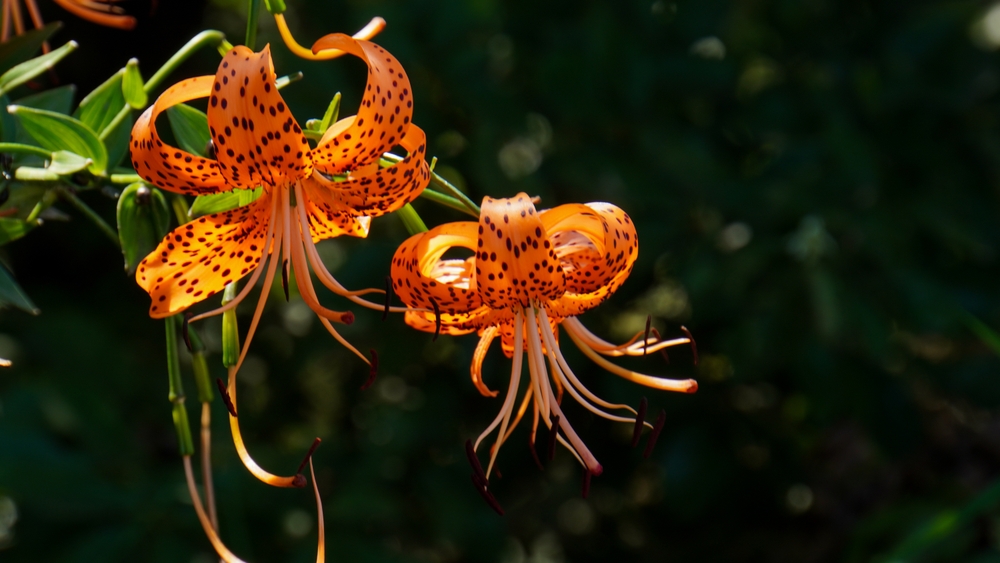
Tiger lilies are a striking addition to shaded gardens, with their bold, orange flowers that feature dark spots. These perennials prefer partial shade and do well in locations that receive a bit of filtered light. While they can tolerate some full shade, they generally require good soil drainage to thrive. They produce large, trumpet-shaped blooms that stand out in shady corners, making them ideal for planting under trees or shrubs.
Tiger lilies do best in moist, well-drained soil but can withstand a variety of conditions once established. The blooms typically appear in mid to late summer, offering a vibrant splash of orange when other perennials may be finishing their flowering season. These lilies grow tall and upright, making them perfect for adding vertical interest to shaded garden spaces.
Heuchera (Heuchera spp.)
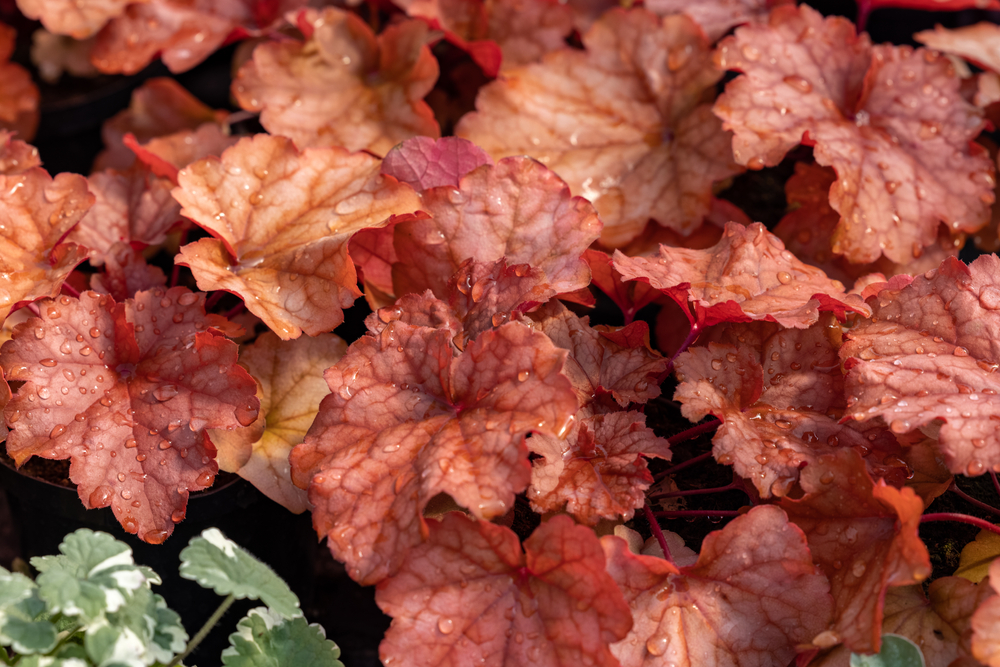
Heuchera, commonly known as coral bells, is a versatile perennial that adds color to shaded gardens with its orange-hued leaves. Varieties like ‘Caramel’ and ‘Peach Flambe’ showcase warm, orange shades that glow in low light. Heuchera thrives in well-drained soil and requires partial to full shade, making it perfect for planting under trees or in other shady areas. The plant’s leaves, which come in varying shades of orange, red, and yellow, add vibrant warmth to garden spaces.
Beyond its beautiful foliage, Heuchera also produces small, bell-shaped flowers on tall stems, adding another layer of interest to your garden. The plant does well in both dry and moist soils once established, though it does prefer consistent moisture. Heuchera works wonderfully in containers, hanging baskets, or as part of a border planting, providing year-round color in shaded spots.
Helenium (Helenium autumnale)
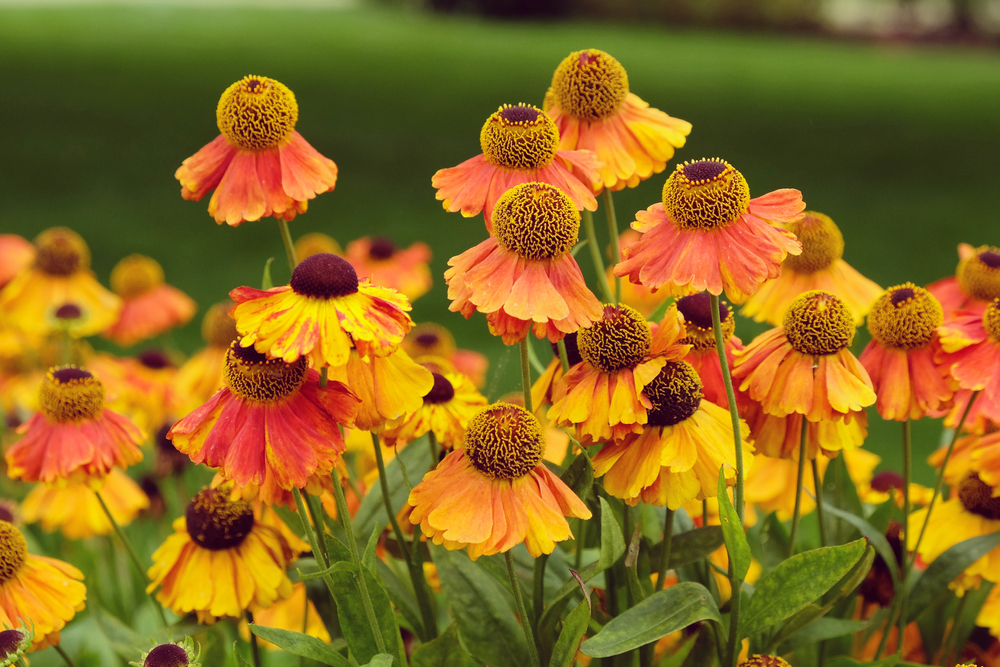
Helenium, also known as sneezeweed, is a late-blooming perennial that offers bright orange and yellow flowers, perfect for adding color to shaded gardens. It thrives in partial shade, particularly in regions with hot summers, and prefers moist, well-drained soil. The plant produces daisy-like blooms that brighten up garden spaces, often lasting into the fall, making it a great addition to the late-season garden. Its orange flowers provide a cheerful contrast against dark foliage.
Helenium is a hardy perennial that requires little maintenance once established. It grows to about 3-4 feet in height and works well in the middle or back of garden borders. This plant is ideal for adding late-season color and attracting pollinators to shaded spaces.
Daylily (Hemerocallis spp.)
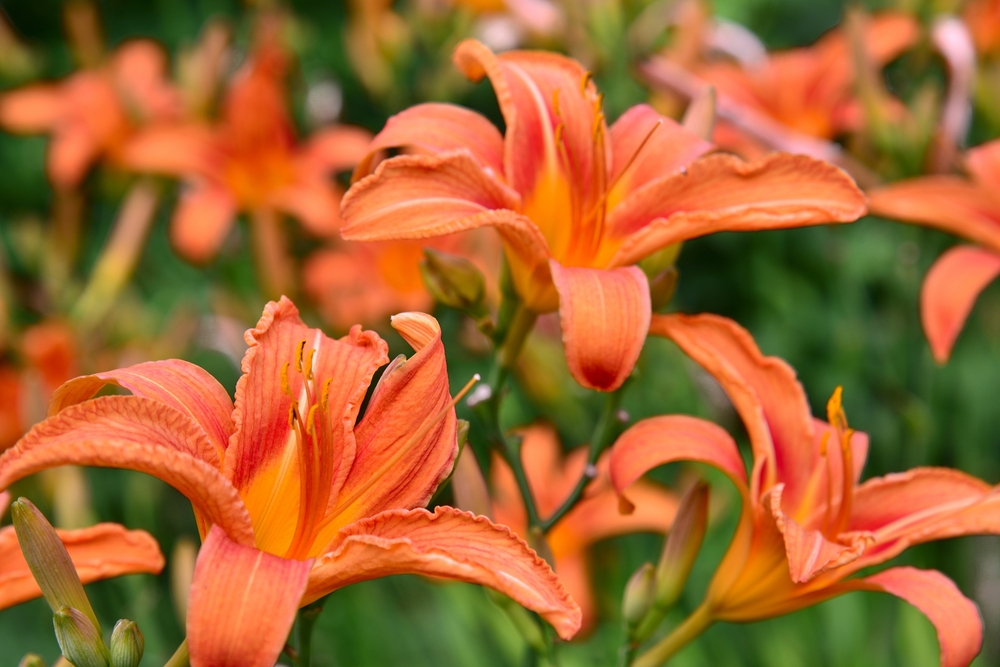
Daylilies are known for their ease of care and wide variety of colors, including striking orange shades. These perennials can handle a range of conditions but thrive in partial to full shade, especially in regions with hot summers. Daylilies are resilient plants that can adapt to various soil types, but they do best in well-drained, slightly acidic soil. Their vibrant orange blooms appear in summer, lasting for a day but opening in succession for weeks, providing continuous color.
These plants are great for beginners and seasoned gardeners alike, as they require minimal attention once established. Daylilies can be grown in clusters to create a bold statement or used as ground cover in shady spots. They are perfect for garden borders, adding a burst of color without overwhelming the surrounding plants.
Japanese Blood Grass (Imperata cylindrica ‘Red Baron’)
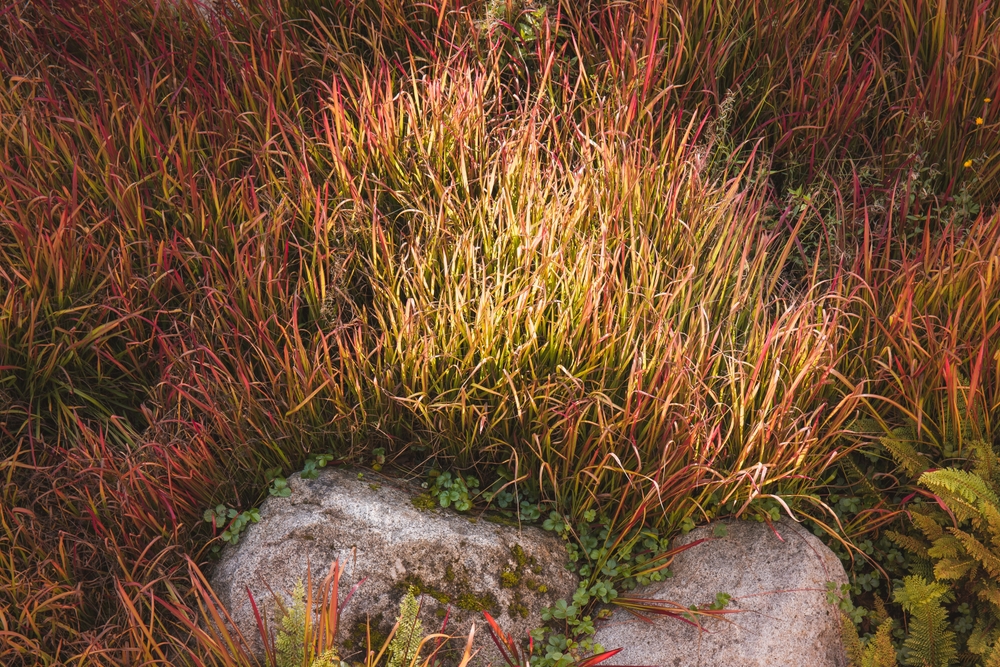
Japanese Blood Grass adds a unique pop of color to shaded gardens with its striking orange and red foliage. While it does best in full sun, it can also thrive in partial shade, especially in areas with consistent moisture. The plant’s dramatic red and orange color is most vibrant in the fall, but its upright growth habit and unique appearance provide year-round interest. The slender blades of the grass sway gently in the breeze, adding movement and texture to garden spaces.
This perennial is low-maintenance, requiring only occasional trimming to maintain its shape. It is also fairly drought-tolerant once established, though it performs best in moist, well-drained soil. Japanese Blood Grass works well in garden borders, containers, or as a striking focal point in shaded areas.
Hemerocallis ‘Stella de Oro’ (Daylily)
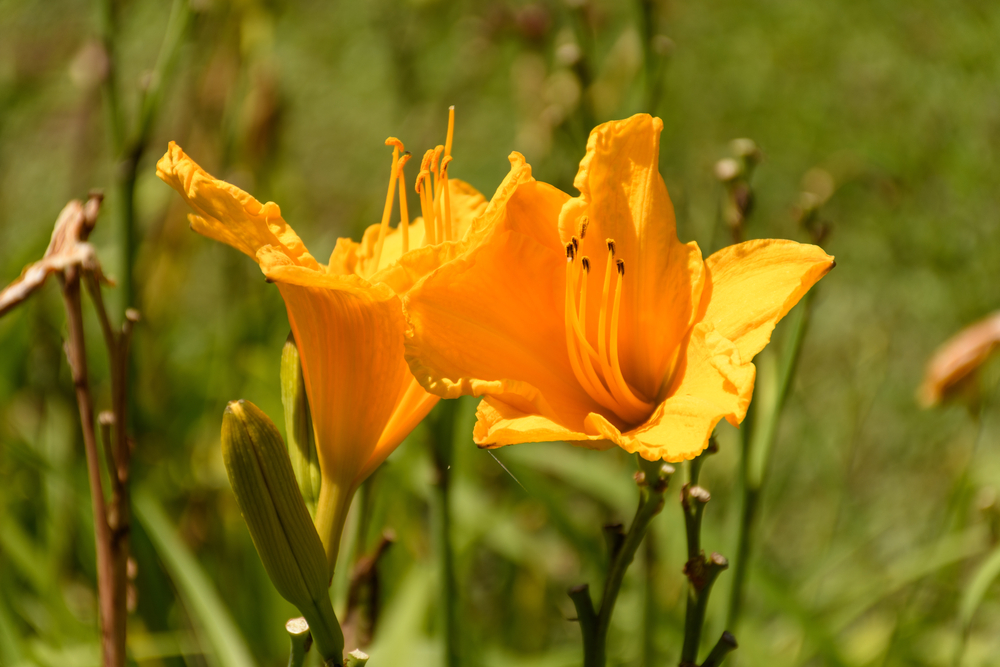
‘Stella de Oro’ is a compact daylily variety that thrives in partial shade, making it perfect for smaller shaded gardens. The plant’s golden-orange blooms add a bright touch of color to low-light areas. Known for its reblooming nature, ‘Stella de Oro’ produces vibrant flowers throughout the summer, ensuring continuous color in the garden. It grows to about 12-18 inches tall, making it a great option for the front of garden beds or along borders.
‘Stella de Oro’ is tolerant of a wide range of soil types and conditions, making it an excellent choice for gardeners with less-than-ideal soil. The plant’s compact size makes it perfect for small spaces, while its ability to withstand some shade adds flexibility to garden design. The cheerful orange flowers brighten up shady corners and create a welcoming atmosphere in any garden.
Bergenia (Bergenia cordifolia)
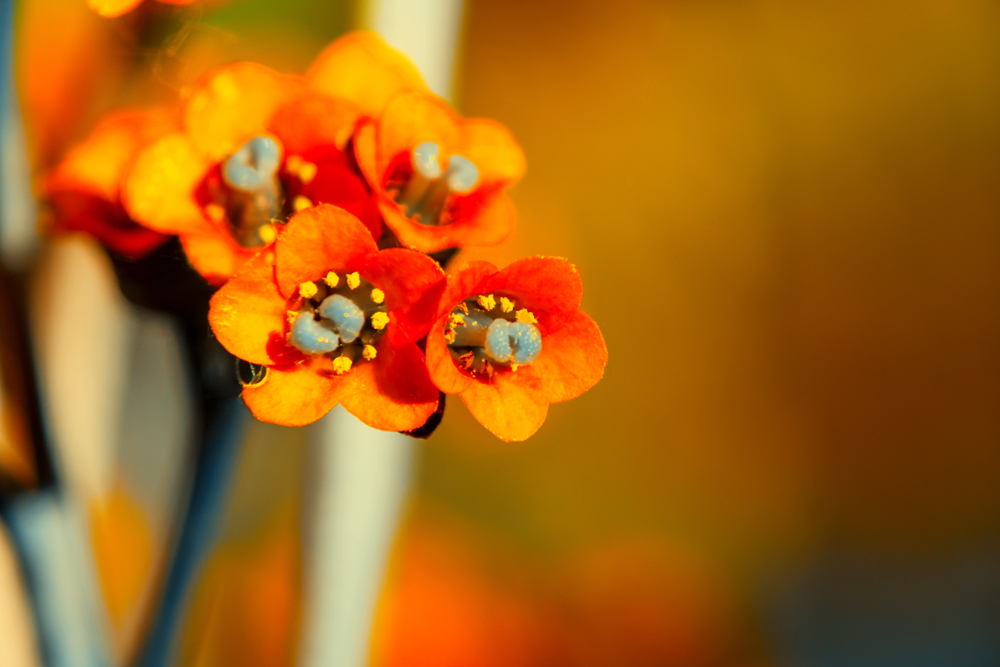
Bergenia, commonly known as pigsqueak, is a bold perennial that features large, heart-shaped leaves and stunning orange flowers in early spring. It thrives in shaded areas, making it an excellent choice for adding vibrant color to woodland gardens or shady borders. The orange flowers stand out against the deep green foliage, creating a striking contrast that enhances the garden’s visual appeal. Bergenia prefers moist, well-drained soil but can tolerate dry conditions once established.
In addition to its beautiful blooms, Bergenia’s large leaves create a lush, dramatic backdrop for smaller plants. It is a low-maintenance perennial that requires little attention other than occasional trimming to keep its shape. Bergenia works well as a groundcover or border plant, especially in shaded or partially shaded areas.
Tithonia (Tithonia rotundifolia)

Tithonia, or Mexican sunflower, is a perennial that offers brilliant orange flowers throughout the summer, making it a showstopper in shaded gardens. Though it generally prefers full sun, it can tolerate partial shade, especially in regions with hotter climates. The plant grows tall, often reaching 4-6 feet in height, and its bright, sunflower-like blooms attract pollinators such as bees and butterflies. Tithonia thrives in well-drained soil and benefits from consistent moisture during the growing season.
This plant is perfect for adding height and drama to shaded garden spaces. Its vibrant orange blooms stand out in any garden and are especially striking when planted in groups. Tithonia works well in mixed borders or as a background plant that brings color and life to less sunny areas.
Epimedium (Epimedium spp.)

Epimedium, also known as barrenwort or fairy wings, is a unique perennial that blooms with delicate orange flowers in the spring. It is an excellent choice for shaded gardens, particularly those with dry, rocky soil, as Epimedium is highly adaptable to tough growing conditions. The flowers are small and understated but pack a punch with their orange and yellow hues, adding subtle beauty to woodland or shaded gardens. Epimedium’s evergreen foliage provides texture and interest even when the flowers are not in bloom.
This perennial requires minimal care once established, making it a great option for low-maintenance gardens. It thrives in well-drained, slightly acidic soil and can tolerate dry shade, making it perfect for planting under trees or in shaded corners of the garden. Epimedium creates a lush, ground-covering effect that helps prevent weeds from taking over.
Foxglove (Digitalis purpurea)
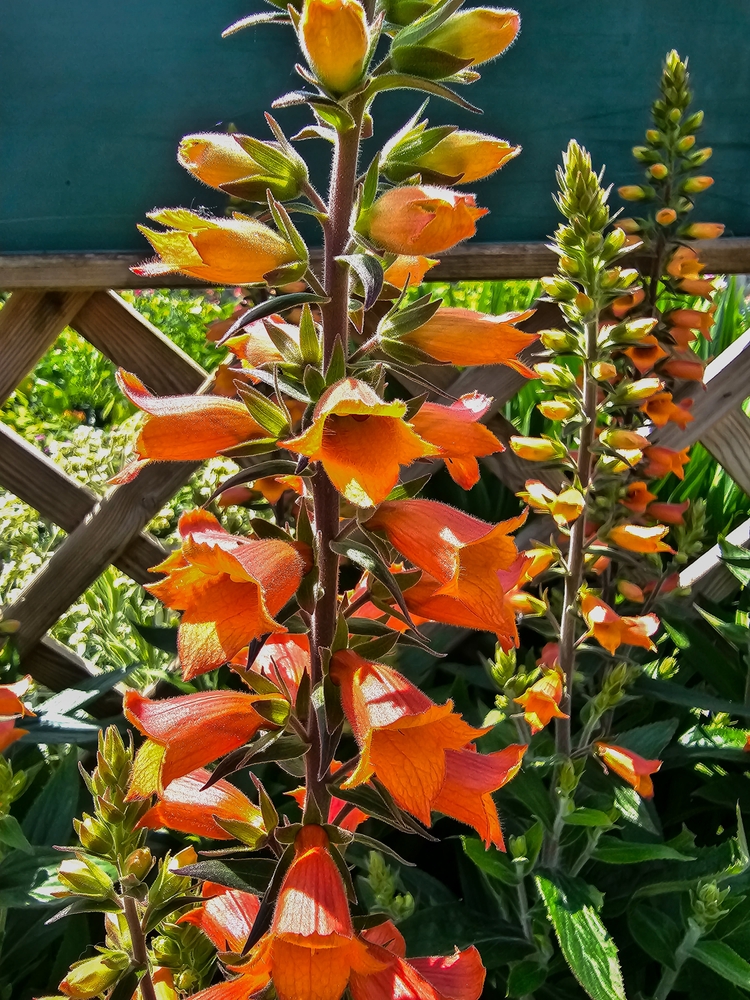
Foxglove is a tall, stately perennial that can add a splash of orange to shaded gardens. It grows tall, with spikes of tubular flowers that open in succession, providing continuous color throughout the summer. Foxglove thrives in partial to full shade, particularly in cool climates, and prefers moist, well-drained soil. Its bright orange blooms attract hummingbirds and pollinators, adding movement and life to the garden.
Foxglove is often used at the back of borders or as a focal point in shaded garden areas. It is relatively easy to grow but requires regular watering to keep the soil consistently moist. Foxglove’s tall flower spikes can bring height and drama to shady garden spaces, especially when planted alongside lower-growing shade-loving perennials.
This article originally appeared on Avocadu.
